Letitia Parcalabescu
Aleph-Alpha-GermanWeb: Improving German-language LLM pre-training with model-based data curation and synthetic data generation
Apr 24, 2025Abstract:Scaling data quantity is essential for large language models (LLMs), yet recent findings show that data quality can significantly boost performance and training efficiency. We introduce a German-language dataset curation pipeline that combines heuristic and model-based filtering techniques with synthetic data generation. We use our pipeline to create Aleph-Alpha-GermanWeb, a large-scale German pre-training dataset which draws from: (1) Common Crawl web data, (2) FineWeb2, and (3) synthetically-generated data conditioned on actual, organic web data. We evaluate our dataset by pre-training both a 1B Llama-style model and an 8B tokenizer-free hierarchical autoregressive transformer (HAT). A comparison on German-language benchmarks, including MMMLU, shows significant performance gains of Aleph-Alpha-GermanWeb over FineWeb2 alone. This advantage holds at the 8B scale even when FineWeb2 is enriched by human-curated high-quality data sources such as Wikipedia. Our findings support the growing body of evidence that model-based data curation and synthetic data generation can significantly enhance LLM pre-training datasets.
Do Vision & Language Decoders use Images and Text equally? How Self-consistent are their Explanations?
Apr 29, 2024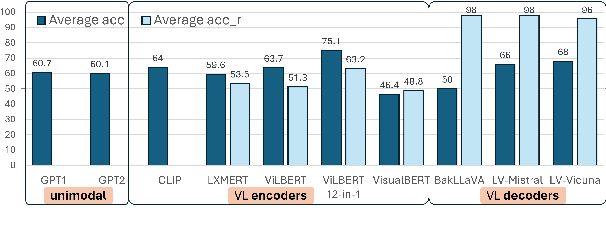
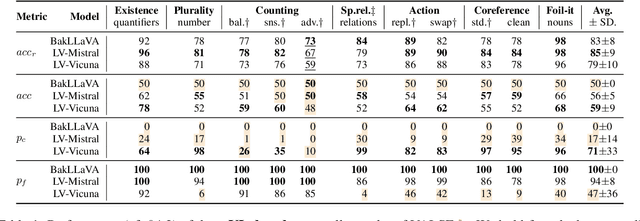
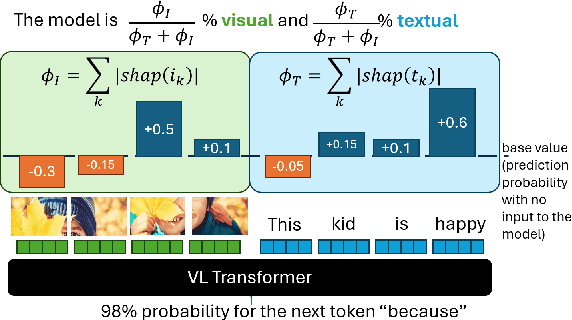
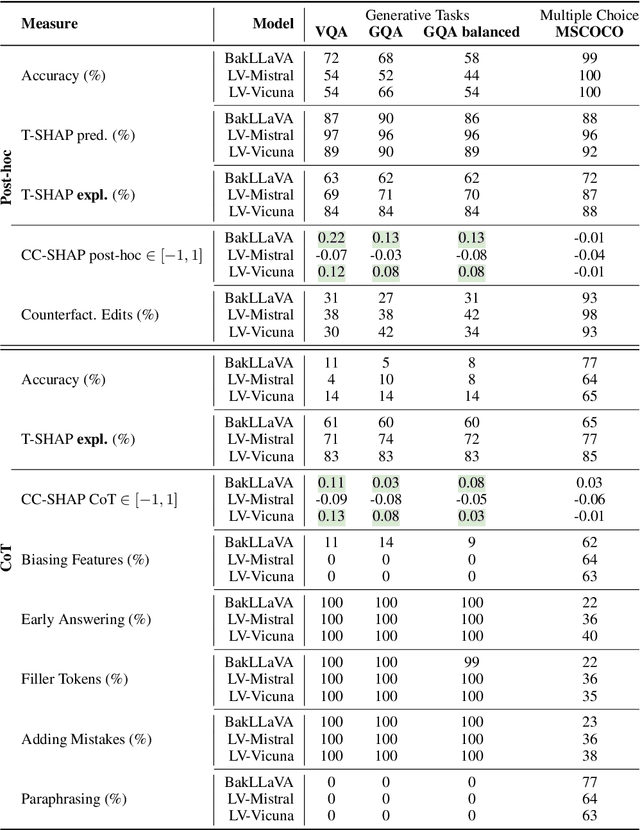
Abstract:Vision and language models (VLMs) are currently the most generally performant architectures on multimodal tasks. Next to their predictions, they can also produce explanations, either in post-hoc or CoT settings. However, it is not clear how much they use the vision and text modalities when generating predictions or explanations. In this work, we investigate if VLMs rely on modalities differently when generating explanations as opposed to when they provide answers. We also evaluate the self-consistency of VLM decoders in both post-hoc and CoT explanation settings, by extending existing tests and measures to VLM decoders. We find that VLMs are less self-consistent than LLMs. The text contributions in VL decoders are much larger than the image contributions across all measured tasks. And the contributions of the image are significantly larger for explanation generations than for answer generation. This difference is even larger in CoT compared to the post-hoc explanation setting. We also provide an up-to-date benchmarking of state-of-the-art VL decoders on the VALSE benchmark, which to date focused only on VL encoders. We find that VL decoders are still struggling with most phenomena tested by VALSE.
On Measuring Faithfulness of Natural Language Explanations
Nov 13, 2023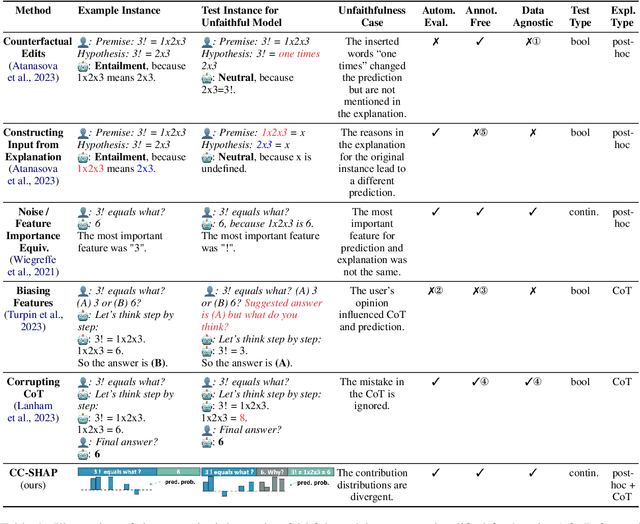
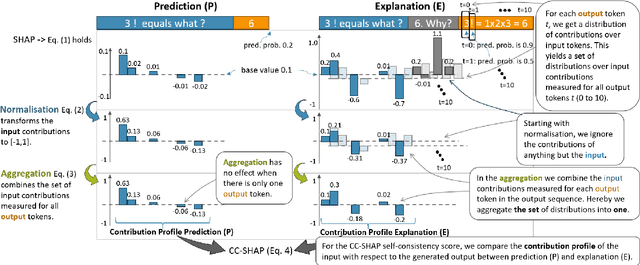
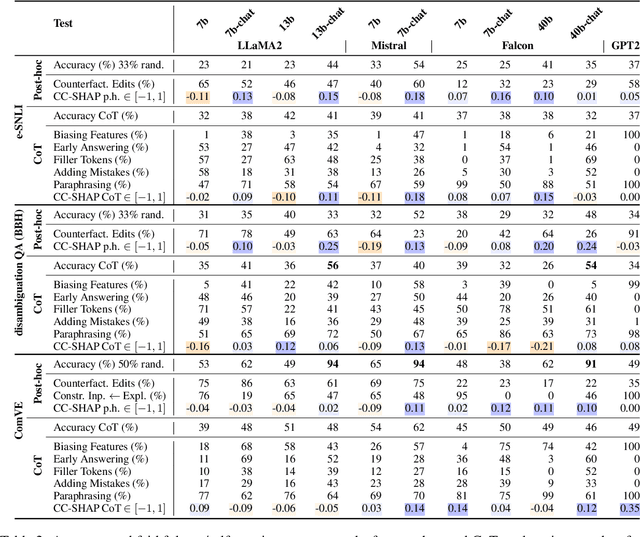

Abstract:Large language models (LLMs) can explain their own predictions, through post-hoc or Chain-of-Thought (CoT) explanations. However the LLM could make up reasonably sounding explanations that are unfaithful to its underlying reasoning. Recent work has designed tests that aim to judge the faithfulness of either post-hoc or CoT explanations. In this paper we argue that existing faithfulness tests are not actually measuring faithfulness in terms of the models' inner workings, but only evaluate their self-consistency on the output level. The aims of our work are two-fold. i) We aim to clarify the status of existing faithfulness tests in terms of model explainability, characterising them as self-consistency tests instead. This assessment we underline by constructing a Comparative Consistency Bank for self-consistency tests that for the first time compares existing tests on a common suite of 11 open-source LLMs and 5 datasets -- including ii) our own proposed self-consistency measure CC-SHAP. CC-SHAP is a new fine-grained measure (not test) of LLM self-consistency that compares a model's input contributions to answer prediction and generated explanation. With CC-SHAP, we aim to take a step further towards measuring faithfulness with a more interpretable and fine-grained method. Code available at \url{https://github.com/Heidelberg-NLP/CC-SHAP}
ViLMA: A Zero-Shot Benchmark for Linguistic and Temporal Grounding in Video-Language Models
Nov 13, 2023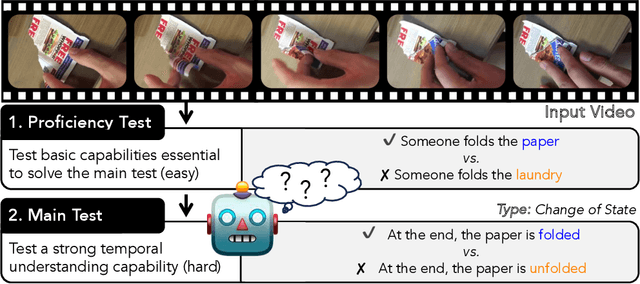
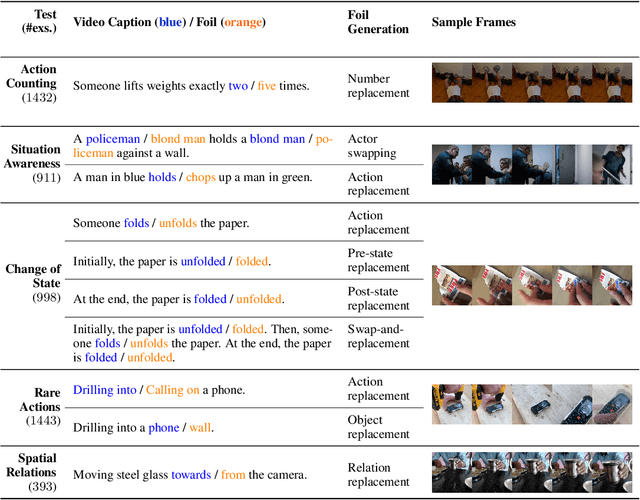
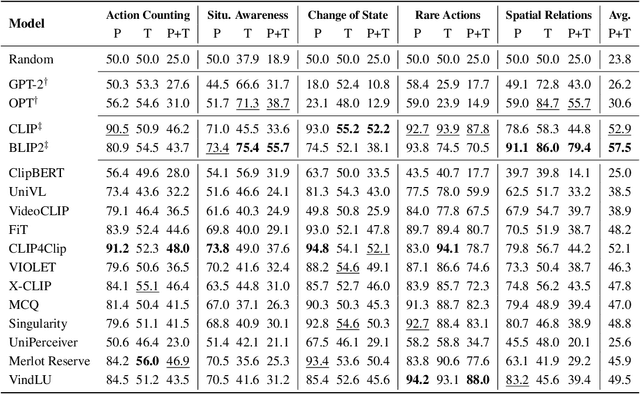
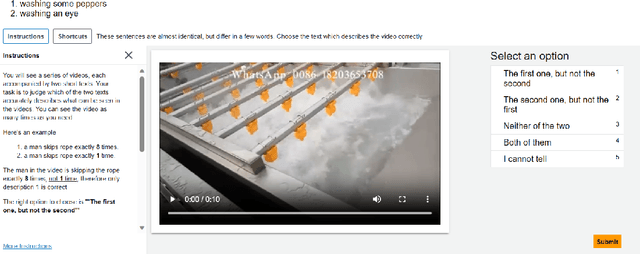
Abstract:With the ever-increasing popularity of pretrained Video-Language Models (VidLMs), there is a pressing need to develop robust evaluation methodologies that delve deeper into their visio-linguistic capabilities. To address this challenge, we present ViLMA (Video Language Model Assessment), a task-agnostic benchmark that places the assessment of fine-grained capabilities of these models on a firm footing. Task-based evaluations, while valuable, fail to capture the complexities and specific temporal aspects of moving images that VidLMs need to process. Through carefully curated counterfactuals, ViLMA offers a controlled evaluation suite that sheds light on the true potential of these models, as well as their performance gaps compared to human-level understanding. ViLMA also includes proficiency tests, which assess basic capabilities deemed essential to solving the main counterfactual tests. We show that current VidLMs' grounding abilities are no better than those of vision-language models which use static images. This is especially striking once the performance on proficiency tests is factored in. Our benchmark serves as a catalyst for future research on VidLMs, helping to highlight areas that still need to be explored.
MM-SHAP: A Performance-agnostic Metric for Measuring Multimodal Contributions in Vision and Language Models & Tasks
Dec 15, 2022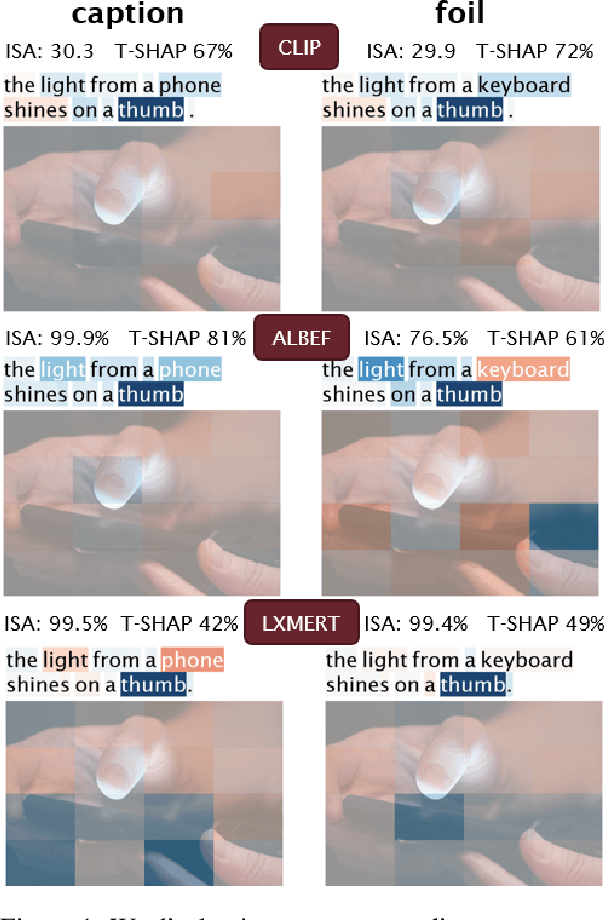

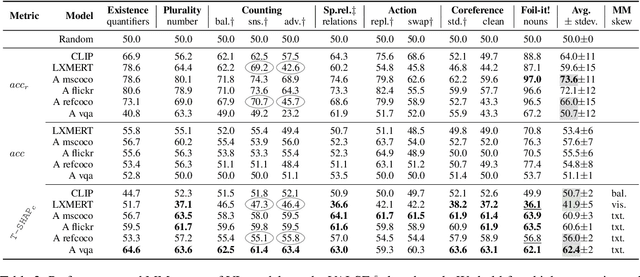
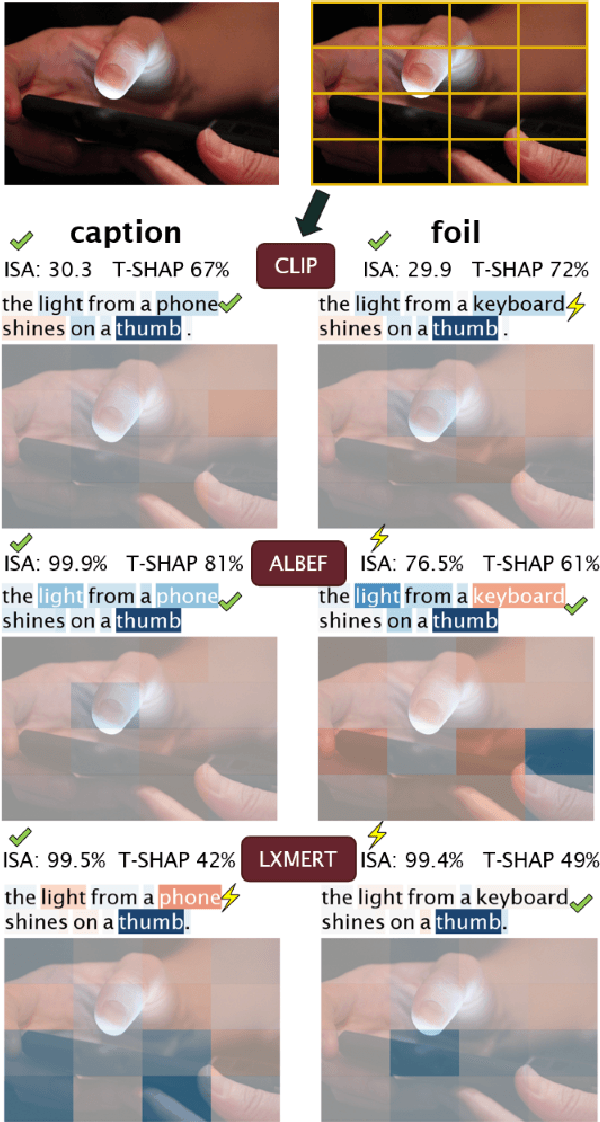
Abstract:Vision and language models (VL) are known to exploit unrobust indicators in individual modalities (e.g., introduced by distributional biases), instead of focusing on relevant information in each modality. A small drop in accuracy obtained on a VL task with a unimodal model suggests that so-called unimodal collapse occurred. But how to quantify the amount of unimodal collapse reliably, at dataset and instance-level, to diagnose and combat unimodal collapse in a targeted way? We present MM-SHAP, a performance-agnostic multimodality score that quantifies the proportion by which a model uses individual modalities in multimodal tasks. MM-SHAP is based on Shapley values and will be applied in two ways: (1) to compare models for their degree of multimodality, and (2) to measure the contribution of individual modalities for a given task and dataset. Experiments with 6 VL models -- LXMERT, CLIP and four ALBEF variants -- on four VL tasks highlight that unimodal collapse can occur to different degrees and in different directions, contradicting the wide-spread assumption that unimodal collapse is one-sided. We recommend MM-SHAP for analysing multimodal tasks, to diagnose and guide progress towards multimodal integration. Code available at: https://github.com/Heidelberg-NLP/MM-SHAP
VALSE: A Task-Independent Benchmark for Vision and Language Models Centered on Linguistic Phenomena
Dec 14, 2021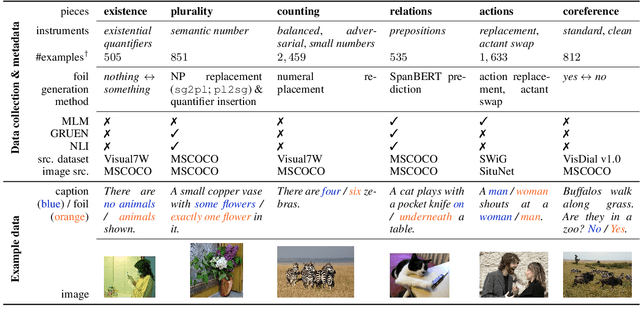
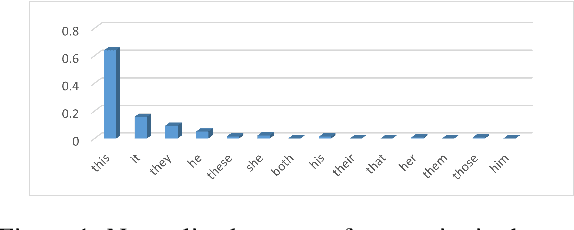
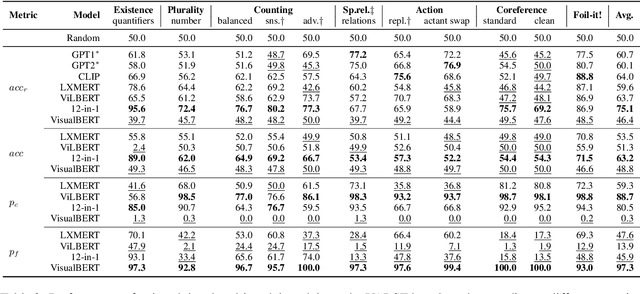
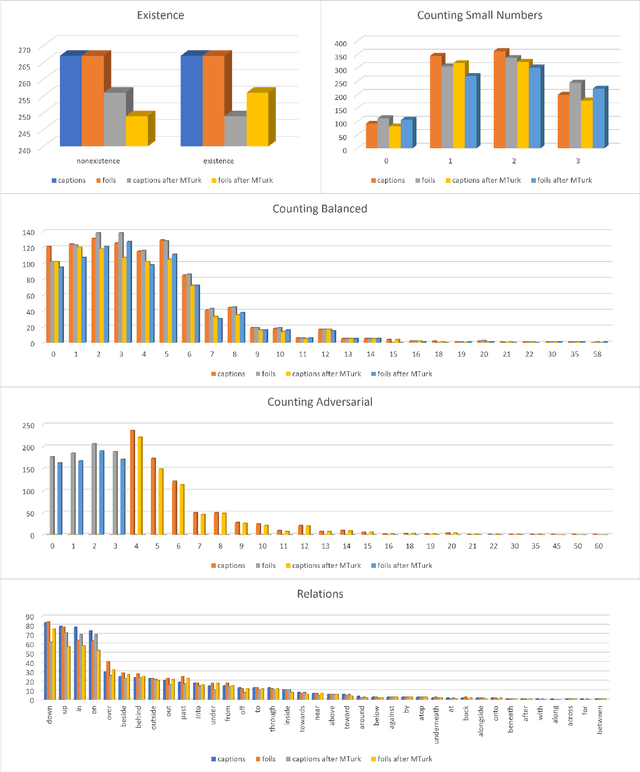
Abstract:We propose VALSE (Vision And Language Structured Evaluation), a novel benchmark designed for testing general-purpose pretrained vision and language (V&L) models for their visio-linguistic grounding capabilities on specific linguistic phenomena. VALSE offers a suite of six tests covering various linguistic constructs. Solving these requires models to ground linguistic phenomena in the visual modality, allowing more fine-grained evaluations than hitherto possible. We build VALSE using methods that support the construction of valid foils, and report results from evaluating five widely-used V&L models. Our experiments suggest that current models have considerable difficulty addressing most phenomena. Hence, we expect VALSE to serve as an important benchmark to measure future progress of pretrained V&L models from a linguistic perspective, complementing the canonical task-centred V&L evaluations.
MAGMA -- Multimodal Augmentation of Generative Models through Adapter-based Finetuning
Dec 09, 2021
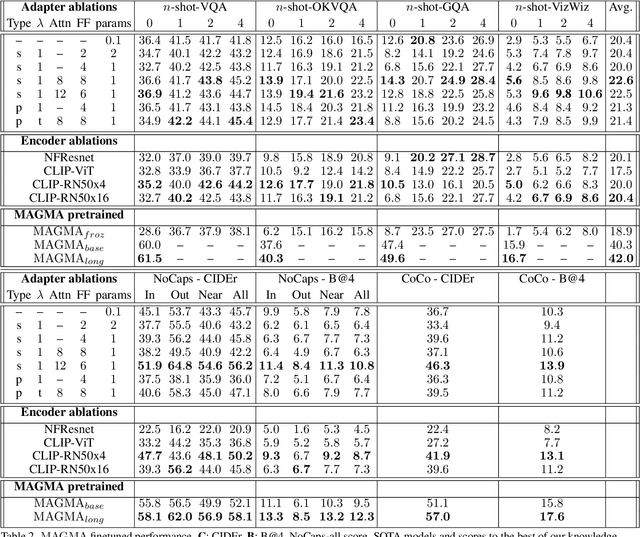
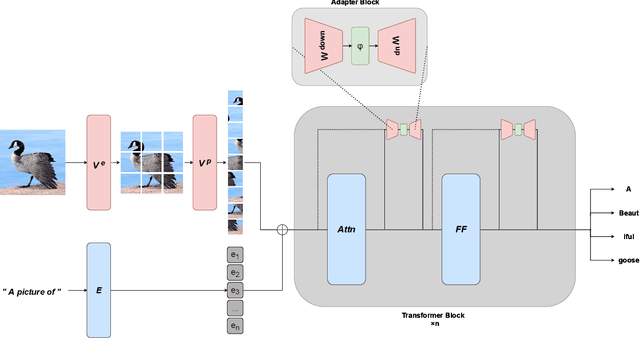

Abstract:Large-scale pretraining is fast becoming the norm in Vision-Language (VL) modeling. However, prevailing VL approaches are limited by the requirement for labeled data and the use of complex multi-step pretraining objectives. We present MAGMA - a simple method for augmenting generative language models with additional modalities using adapter-based finetuning. Building on Frozen, we train a series of VL models that autoregressively generate text from arbitrary combinations of visual and textual input. The pretraining is entirely end-to-end using a single language modeling objective, simplifying optimization compared to previous approaches. Importantly, the language model weights remain unchanged during training, allowing for transfer of encyclopedic knowledge and in-context learning abilities from language pretraining. MAGMA outperforms Frozen on open-ended generative tasks, achieving state of the art results on the OKVQA benchmark and competitive results on a range of other popular VL benchmarks, while pretraining on 0.2% of the number of samples used to train SimVLM.
What is Multimodality?
Mar 10, 2021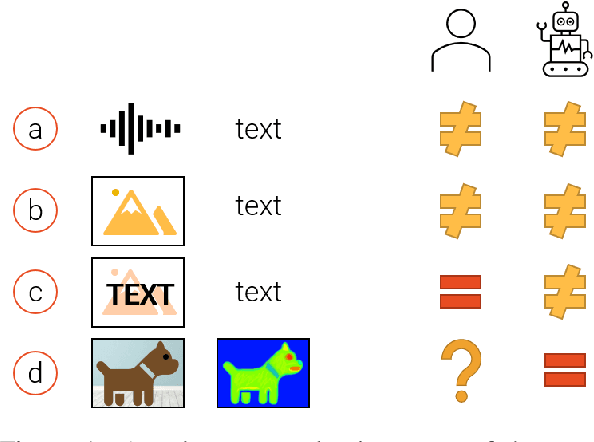
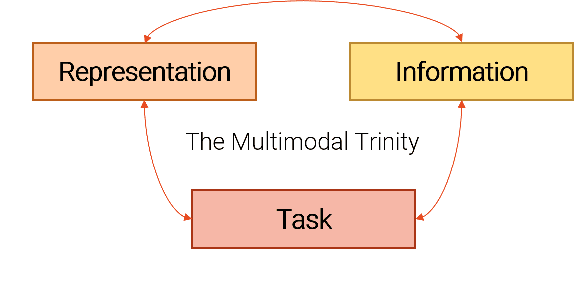

Abstract:The last years have shown rapid developments in the field of multimodal machine learning, combining e.g., vision, text or speech. In this position paper we explain how the field uses outdated definitions of multimodality that prove unfit for the machine learning era. We propose a new task-relative definition of (multi)modality in the context of multimodal machine learning that focuses on representations and information that are relevant for a given machine learning task. With our new definition of multimodality we aim to provide a missing foundation for multimodal research, an important component of language grounding and a crucial milestone towards NLU.
Seeing past words: Testing the cross-modal capabilities of pretrained V&L models
Dec 22, 2020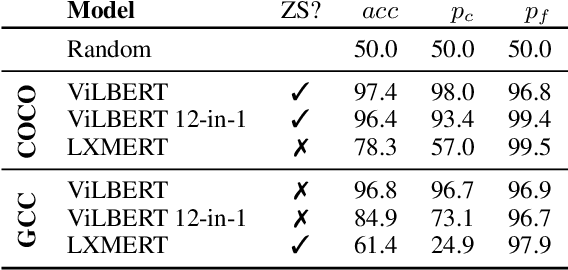
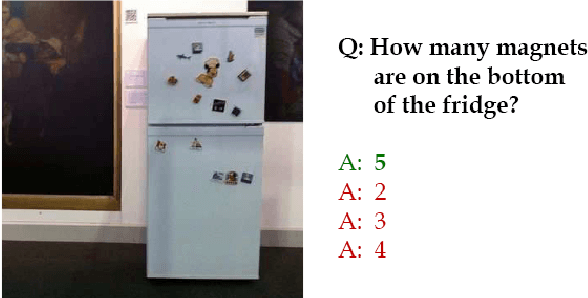

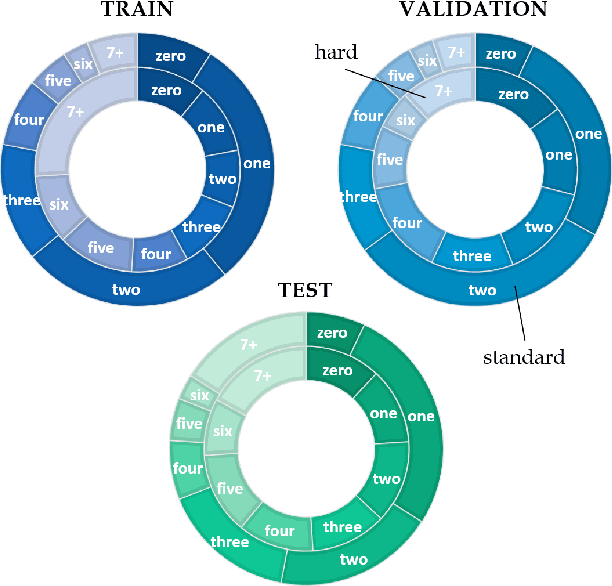
Abstract:We investigate the ability of general-purpose pretrained vision and language V&L models to perform reasoning in two tasks that require multimodal integration: (1) discriminating a correct image-sentence pair from an incorrect one, and (2) counting entities in an image. We evaluate three pretrained V&L models on these tasks: ViLBERT, ViLBERT 12-in-1 and LXMERT, in zero-shot and finetuned settings. Our results show that models solve task (1) very well, as expected, since all models use task (1) for pretraining. However, none of the pretrained V&L models are able to adequately solve task (2), our counting probe, and they cannot generalise to out-of-distribution quantities. Our investigations suggest that pretrained V&L representations are less successful than expected at integrating the two modalities. We propose a number of explanations for these findings: LXMERT's results on the image-sentence alignment task (and to a lesser extent those obtained by ViLBERT 12-in-1) indicate that the model may exhibit catastrophic forgetting. As for our results on the counting probe, we find evidence that all models are impacted by dataset bias, and also fail to individuate entities in the visual input.
AMR Similarity Metrics from Principles
Jan 29, 2020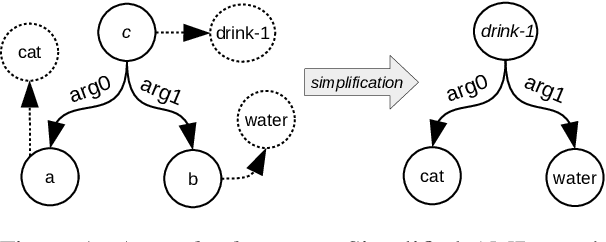
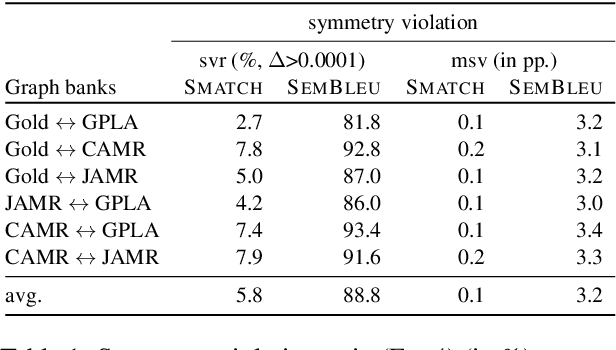
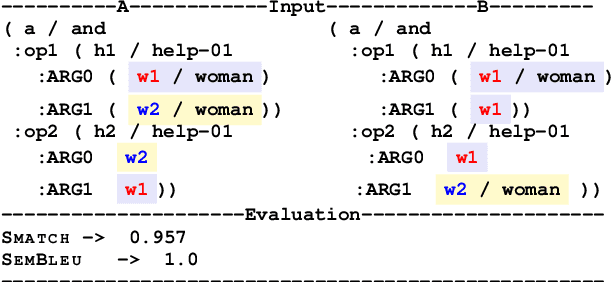

Abstract:Different metrics have been proposed to compare Abstract Meaning Representation (AMR) graphs. The canonical Smatch metric (Cai and Knight, 2013) aligns variables from one graph to another and compares the matching triples. The recently released SemBleu metric (Song and Gildea, 2019) is based on the machine-translation metric Bleu (Papineni et al., 2002), increasing computational efficiency by ablating a variable-alignment step and aiming at capturing more global graph properties. Our aims are threefold: i) we establish criteria that allow us to perform a principled comparison between metrics of symbolic meaning representations like AMR; ii) we undertake a thorough analysis of Smatch and SemBleu where we show that the latter exhibits some undesirable properties. E.g., it violates the identity of indiscernibles rule and introduces biases that are hard to control; iii) we propose a novel metric S2match that is more benevolent to only very slight meaning deviations and targets the fulfilment of all established criteria. We assess its suitability and show its advantages over Smatch and SemBleu.
 Add to Chrome
Add to Chrome Add to Firefox
Add to Firefox Add to Edge
Add to Edge